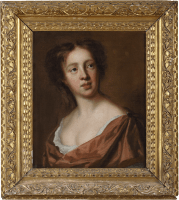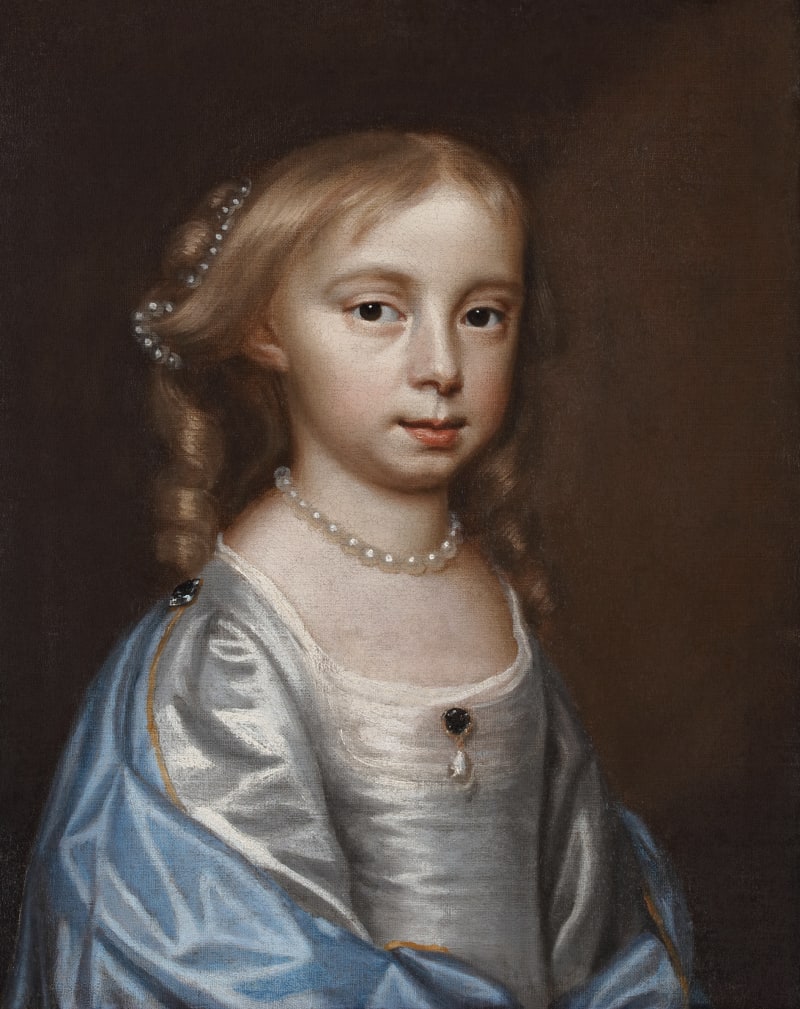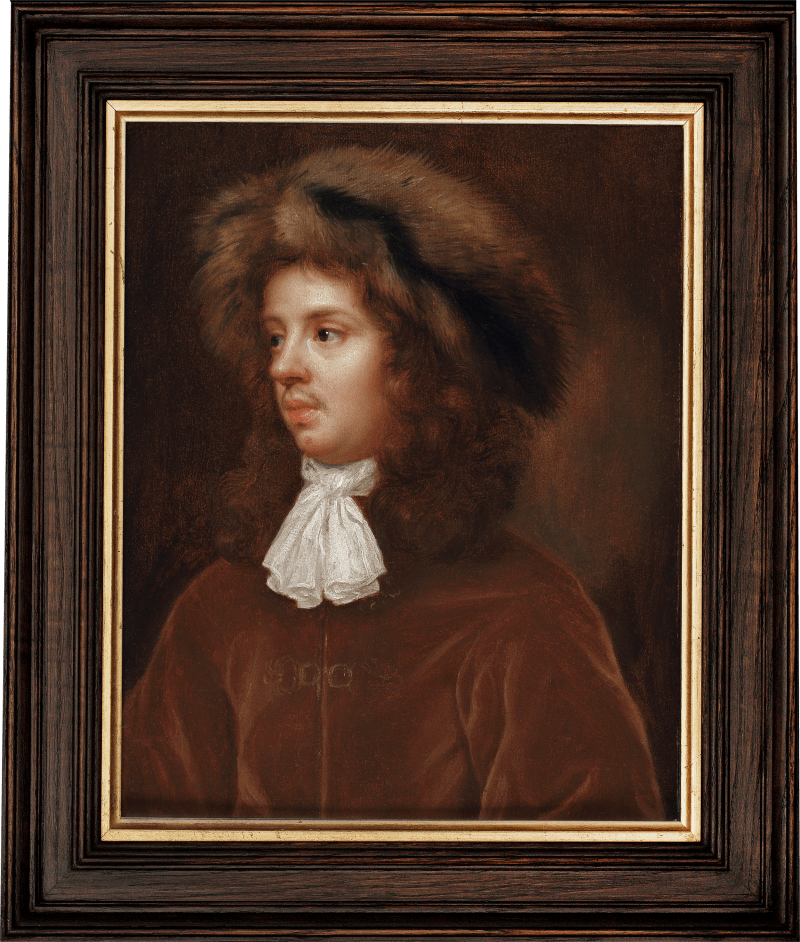When not working on formal commissions Beale continued to hone her skills through expressive portrait studies that she undertook of her own accord. In documenting her artistic output Charles Beale divided her work into three distinct categories of painterly activity: portraits done ‘for study and improvement’, ‘for friends and in return for kindness’ and ‘for profit’.[1]
The sitter’s relaxed pose and upward gaze in this work diverge from the typical, more formal poses seen in Beale’s commissioned works, suggesting that the painting was done for self-improvement; it appears less an exercise in recording a likeness and more an exploration of character. In its informality it bears a striking resemblance to the drawings produced by her son Charles the Younger in his sketchbooks showing members of the Beale household. Beale’s own extensive experimentations with poses and head positions at this date are well recorded. In 1681, paintings done ‘for study and improvement’ included ‘Son Charles looking up’ and ‘Keate Trioche...
When not working on formal commissions Beale continued to hone her skills through expressive portrait studies that she undertook of her own accord. In documenting her artistic output Charles Beale divided her work into three distinct categories of painterly activity: portraits done ‘for study and improvement’, ‘for friends and in return for kindness’ and ‘for profit’.[1]
The sitter’s relaxed pose and upward gaze in this work diverge from the typical, more formal poses seen in Beale’s commissioned works, suggesting that the painting was done for self-improvement; it appears less an exercise in recording a likeness and more an exploration of character. In its informality it bears a striking resemblance to the drawings produced by her son Charles the Younger in his sketchbooks showing members of the Beale household. Beale’s own extensive experimentations with poses and head positions at this date are well recorded. In 1681, paintings done ‘for study and improvement’ included ‘Son Charles looking up’ and ‘Keate Trioche 3 qts looking up’, alongside many ‘side face’ compositions featuring Katy Sandys, Kate Trioche and Alice Woodforde, all members of Beale’s household or studio.[2]
The choice of support also suggests this was not a work produced for a fee-paying customer. Instead of the more expensive canvas, Beale has used bedticking – a dense, tightly woven fabric used for covering mattresses and pillows. It was both cheap and readily available and one of various alternative supports, including sacking and onion bags, the artist used for informal works. These more experimental works represent some of her most sensitive and expressive achievements.
Although the sitter is unidentified, it is highly probable that she had a personal connection to the Beale household. The models for Beale’s portraits ‘for study and improvement’ were predominantly drawn from her immediate circle, including her family and closest friends or studio assistants. This intimate familiarity with her models likely contributed to their nuanced and emotional portrayals, which are immediately recognisable in Beale’s portrait studies.
[1] See Beale, ‘Notebook 1676/7’ and ‘Dairy 1680/1’.
[2] Beale, ‘Dairy 1680/1’.













